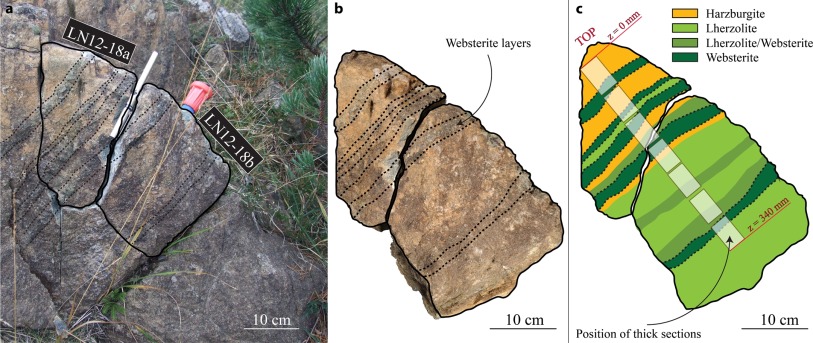Dec 2016 – New paper in EPSL: Dating the formation of mantle heterogeneities

Constraining the scale and the nature of mantle heterogeneities is critical to understand mantle dynamics, but there is still limited information available on the mechanisms and timing of formation of mantle heterogeneities observed in exhumed mantle rocks. Most of those heterogeneities are layered pyroxene-rich veins that form as a result of melt focusing and subsequent melt-rock reactions (Le Roux et al. 2007, 2008, 2009). A critical question is whether those heterogeneities reflect ubiquitous melt-rock reaction processes in the upper mantle, or whether they only form locally at the time of exhumation. Those two hypotheses have drastically different consequences. If mantle heterogeneities in exhumed mantle rocks reflect ubiquitous processes, one can assume that large quantities of melts may accumulate at depth, and not necessarily erupt. On the other hand, if mantle heterogeneities observed in exhumed mantle rocks usually form during exhumation, melt accumulation and melt-rock reaction processes in the mantle may only be local processes. Answering this question requires the ability to constrain the timing of formation of those heterogeneities relative to the age of exhumation in a given massif. In the Le Roux et al. (2016) study funded by NSF-EAR, we present a new method that places solid constraints on the age of layered pyroxenites veins, products of melt-rock reaction in the Lherz Massif. We combine high-resolution trace element profiles, isotope model ages, and diffusive re-equilibration timescales using major and trace element closure temperatures to constrain the formation age of layered pyroxenites in exhumed peridotites. We show that these heterogeneities are 1.5-1.8 Ga old and that their formation of is clearly disconnected from the process of exhumation at ~ 100 Ma. These results are important because they show that melt–rock reactions that lead to the formation of such heterogeneities are not a local process due to exhumation of the mantle, but must rather be widespread and continue to occur at lithosphere-asthenosphere boundaries today.
http://www.sciencedirect.com/science/article/pii/S0012821X16304654
